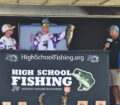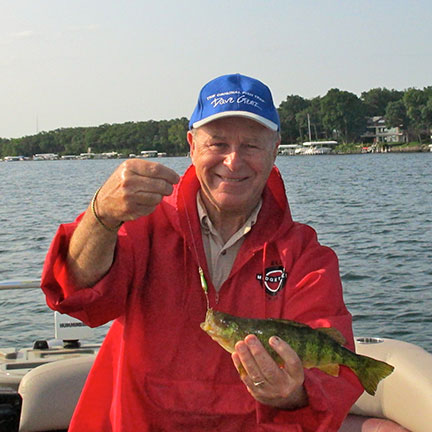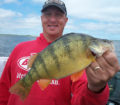By Bob Jensen
Fishing the Midwest Fishing Team

(photo by Bob Jensen) Professional bass angler Jay Przekurat knows that to earn the first place trophy, you’ve got to first find the fish.
The open water fishing season of 2023 has arrived! A good number of anglers live in regions where it’s open water fishing season year ‘round, but many others don’t. A lot of anglers who live where lakes get iced-over enjoy ice fishing, but warm weather and open water gets us excited about casting or trolling a lure instead of dropping it through a hole in the ice. And we have high expectations for open water fishing.
Many of us have a new rod, reel, or lure that we’re anxious to put into use. Others have new or new-to-them boats, motors, and various electronics. Some of the products that are new to the fishing world truly are amazing, but one thing remains the same.
Some refer to it as the First Rule of Fishing: If you want to catch fish, first you’ve got to find them. You can have all the best and newest equipment, but if you don’t put your lure near a fish, you’re not going to get bit. Following are some ideas about finding those fish that we want to catch.
It’s important to remember that a fish’s life revolves around two things, and those two things influence where the fish will be. Those two things are reproducing and eating. In late winter, spring, and early summer, most fish will be either getting ready to spawn, spawning, or finishing with the spawn. The rest of the year they’ll be looking for something to eat. If you can identify which phase the fish are in, you can narrow your search for them substantially.
Let’s pretend we’re after walleyes and it’s early in the year. They’re probably in a spawn mode. In most bodies of water, the walleyes spawn in shallow water close to shore. That narrows our search quite a bit, but when you take into consideration that they prefer a hard bottom area with some current for spawning, that narrows our search even more. Find an area that has hard bottom and a little current and you’re probably going to be close to walleyes.
Same thing is true with crappies and bass. They’re nest builders, so they need an area that has a bottom where they can fan out a nest with their tail or fins. They like to have some cover nearby. Reeds, a log, a dock, maybe even a rock or two will attract fish looking for a place to build their nest. Again, if you find an area that is conducive to nest building, in the early part of the year, you’re probably going to be where the bass and panfish are.
After the spawn, the fish will be wherever their food is. Walleyes are often thought of as bottom-feeders, and they are if that’s where their food is. When they’re on a crawdad or perch diet, they’ll be near the bottom of the lake or river. That’s where crawdads and perch live. This is when a jig/Rage Swimmer combination will catch’em.
But if their food is off the bottom, they’ll be off the bottom. Successful anglers have learned that walleyes can be caught when they’re a few or many feet from the bottom and feeding on mayflies or suspended baitfish. This is when trolling a Hornet or Lucky Shad crankbait will be productive. Predator fish will be wherever their food is any time other than when they’re in the spawn mode.
Later in the summer and through the fall when the fish are often in or over deeper water, pay close attention to your depth finder. Modern sonar units will reveal the location of the fish. In deeper water, it works best to find the fish with your depth finder before you drop a line. However, finding them doesn’t mean they’ll bite. If you see them and they won’t bite, try a different presentation or come back later. Eventually they’ll bite. Remember the First Rule of Fishing and you’ll catch more fish more often.














